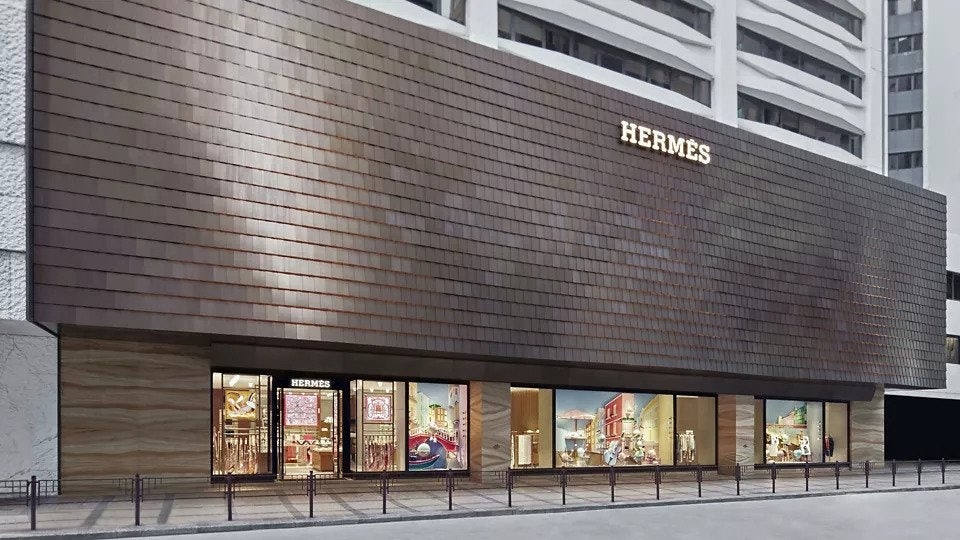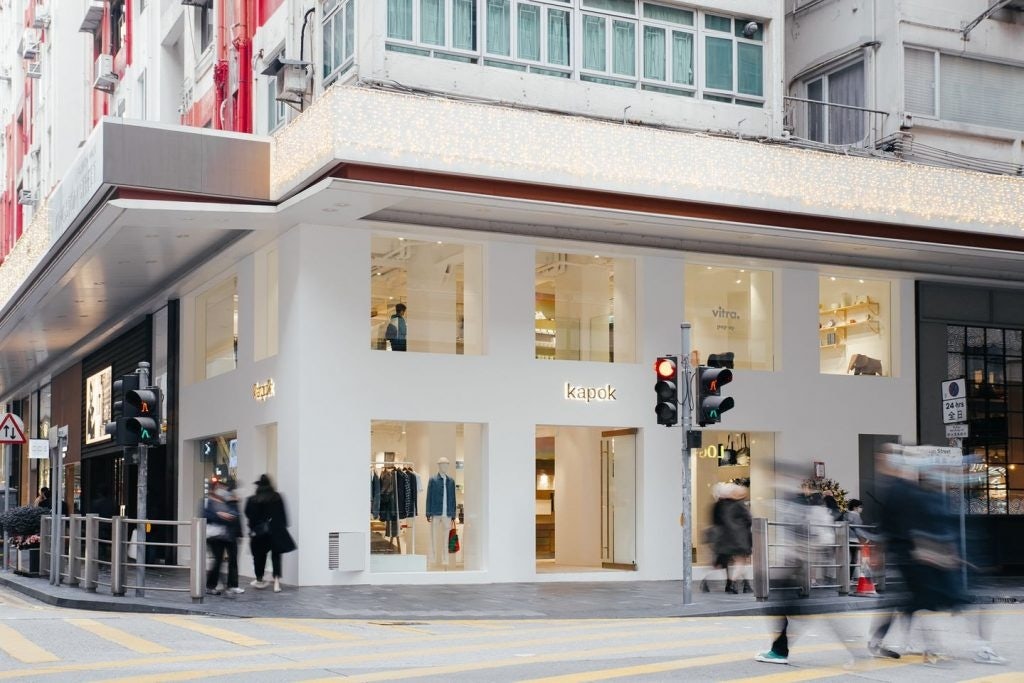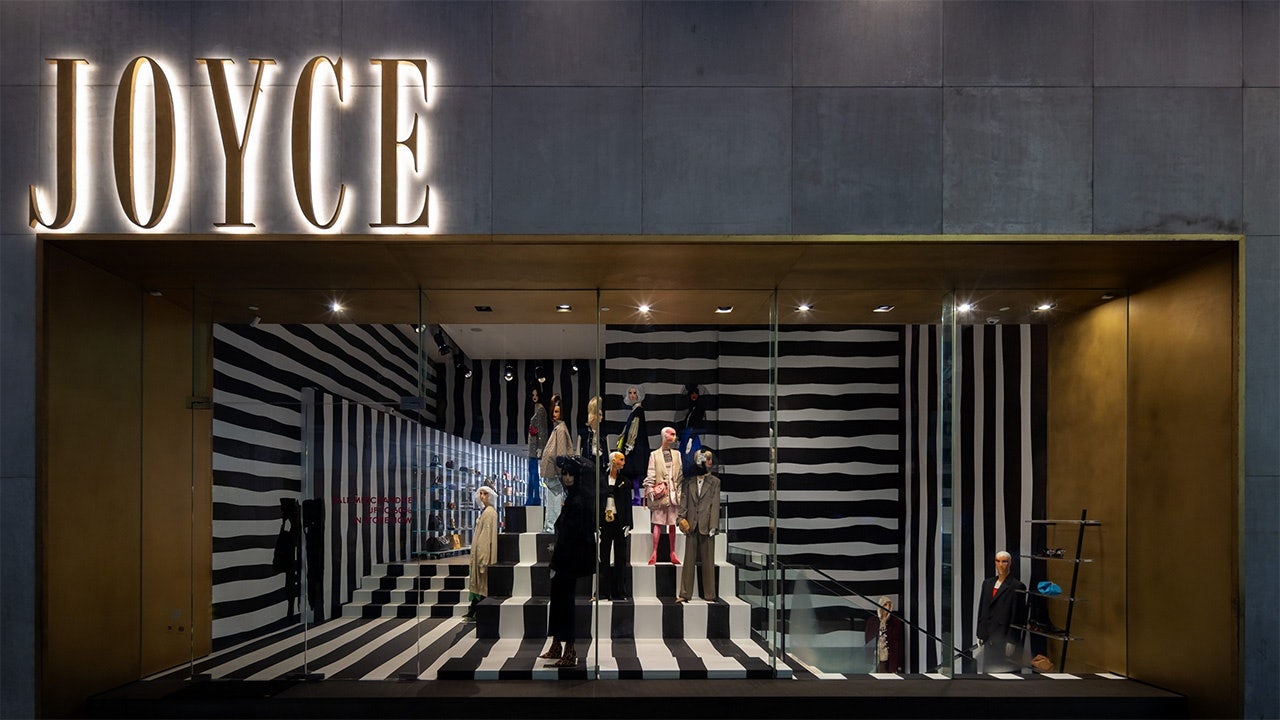Hong Kong-based luxury retailer Joyce’s Central flagship has always been a go-to fashion destination thanks to its cutting-edge selection of brands and legendary window displays. Earlier this month, however, passersby were surprised when greeted with a nostalgic display, aptly titled “Finale,” announcing the closure of one of the city’s most beloved fashion boutiques.
Store closures have become all too common in Hong Kong since the political unrest of 2019, followed by the COVID-19 pandemic in 2020. Like other major cities around the world, brands and retailers were forced to close shop due to continuous lockdowns.
Over two years on, and the West and other parts of Asia are starting to show signs of recovery, while Hong Kong’s retail market is still experiencing shockwaves due to persistent border closures and uncertainty surrounding the local government’s pandemic policies.
In just the past few months, brands like Burberry, Valentino, Tiffany & Co., and Coach have shuttered stores in what was once considered prime retail space in the city.
According to experts, however, the future isn’t all doom and gloom.
“Yes, the luxury market overall isn’t doing well since COVID, but certain brands are still on the up in Hong Kong,” says Oliver Tong, head of retail at property giant Jones Lang LaSalle Hong Kong and Macau.
“It’s really a mixed bag. While it’s true that many luxury brands have consolidated their local retail networks, others have also expanded or opened new flagship locations. It comes down to the brand itself and whether they are still resonating with the local customer,” he explains.
Popular luxury brands like Hermès and Dior are among the elite few that have recently seized the opportunity to invest in bigger flagship stores on Tsim Sha Tsui’s Canton Road, which in its heyday was a magnet for Chinese mainland tourists. In a recent interview, Dior’s chief executive and chairman Pietro Beccari said that the new flagship, which is due to open later this month, showed the brand’s commitment to its “loyal clientele” and is “optimistic” about the city’s future.

“Luxury brands are still actively seeking opportunities [in Hong Kong] but need certainty from the government before they can make any concrete decisions. They are also aware that what has worked in the past may not work for the future, which is why they need to add some magic to the experience.
“In the past few months we have seen brands forgo the idea of opening permanent spaces in favor of large-scale pop-up stores in districts where they don’t have a presence. It allows them to target new customers and sell different items,” says Tong.
Looking ahead, different challenges arise, especially if Hong Kong wishes to retain its status as a premier shopping hub in Asia. Even prior to the pandemic, the city was experiencing stiff competition from other Asian markets including mainland China, Thailand, and Korea. Tong says that the city’s low uptake to online shopping — online shopping accounts for around 26 percent of total retail purchases made in China versus 8 percent in Hong Kong — has also placed additional pressure on retailers and brands to think outside the box and create more unique shopping experiences for customers.
“Low rents can be very attractive because they create a level playing field not just for big brands but also local retailers. More vacant space means that it is more feasible to develop and explore new concepts such as eatertainment and retailtainment to keep the local clientele engaged and spending,” says Tong.
Interestingly, many local fashion groups and retailers including lifestyle boutique Kapok and Rue Madame Fashion Group (which operates popular brands like Sweaty Betty and Whistles) have jumped to open new stores in key locations while expanding their brand offerings. With rent in prime locations at their lowest since 2003 — Tong estimates that high street rents have dropped around 75 to 80 percent from their peak — landlords as well as independent brands and retailers should look to carve a niche for themselves.

“It’s great to have more diversity but the key is for landlords to keep rents reasonable so that the retail landscape can continue to be interesting even when the borders open. This will make Hong Kong more attractive to tourists as there is a clear differentiation between us and China, and the rest of the world,” says Ariane Zagury, founder of Rue Madame Fashion Group.

